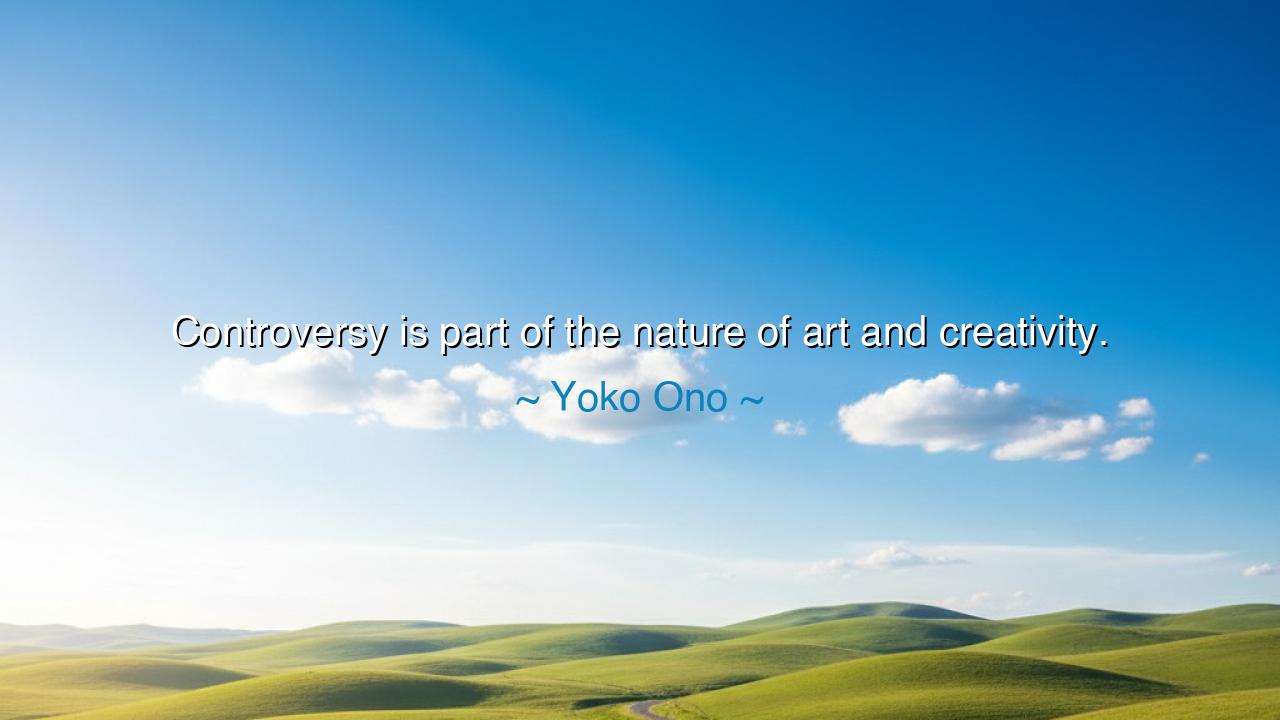
Controversy is part of the nature of art and creativity.






Yoko Ono once declared with piercing simplicity: “Controversy is part of the nature of art and creativity.” In this statement lies a truth that has echoed since humankind first painted upon cave walls, sang around fires, or carved statues from stone. To create is not merely to imitate the familiar, but to challenge the boundaries of thought, to disturb the settled dust of tradition, and to summon visions that others may not yet be ready to behold. Thus, controversy is not the enemy of art, but its companion, its proof, its inevitable shadow.
The meaning of this quote reveals that true creativity does not walk the safe road. It dares to provoke, to awaken, and at times to offend. For the new always unsettles the old, and the daring always rattles the timid. If art sought only to please, it would become decoration; but when art seeks to reveal truth, it must sometimes wound before it heals. Yoko Ono herself embodied this, as her work often bewildered critics, yet opened new ways of seeing sound, silence, performance, and life itself.
The origin of such a thought comes from the long tradition of artists whose work sparked storms of rejection before becoming immortal. Consider Vincent van Gogh, whose swirling visions of light and color were dismissed as madness in his lifetime. He died poor and broken, yet today his paintings are revered as windows into the soul of existence. His life proves that controversy and misunderstanding often cloak the most profound creativity, only later to be unveiled as genius.
History also gives us the example of Socrates, though not a painter or musician, yet an artist of ideas. His dialogues, his questioning, his relentless pursuit of truth stirred such disturbance in Athens that he was condemned to drink poison. His creativity lay in the shaping of minds, and his death reminds us that the world does not always welcome those who reveal what is uncomfortable. Yet from his sacrifice sprang the vast rivers of philosophy that nourish us still.
In Ono’s words there is also courage. For she does not speak of controversy with regret, but as part of the very nature of art. Just as storms are part of the sea and fire is part of the forge, so too is dispute part of creation. The artist must not fear it but embrace it, knowing that every cry of protest, every voice of misunderstanding, is evidence that their work has stirred the soul. Silence may follow mediocrity, but the echo of controversy follows vision.
What lesson, then, shall we draw? That we must not shrink from creating simply because others may not understand. If your work unsettles, it may be a sign that it is alive. If your song is mocked, if your words are questioned, if your vision is resisted—take heart. The path of the artist is not to be loved by all, but to be true to the creative fire within. The seed of controversy often blooms into the harvest of recognition, though sometimes only long after the artist has gone.
Practically, this means that in our own lives, whether we are artists, thinkers, or builders of dreams, we must choose courage over comfort. Write the words that burn within you, paint the visions that others call strange, speak the truths that silence demands. Do not polish your voice to please, but let it ring with authenticity. In doing so, you join the eternal company of creators who, through controversy, forged pathways for generations yet to come.
So let Yoko Ono’s teaching stand as a beacon: art and creativity are not meant to be safe, but to be alive. To create is to risk, to provoke, to face the storm—and in doing so, to leave behind something that will outlast the storm itself.






AAdministratorAdministrator
Welcome, honored guests. Please leave a comment, we will respond soon